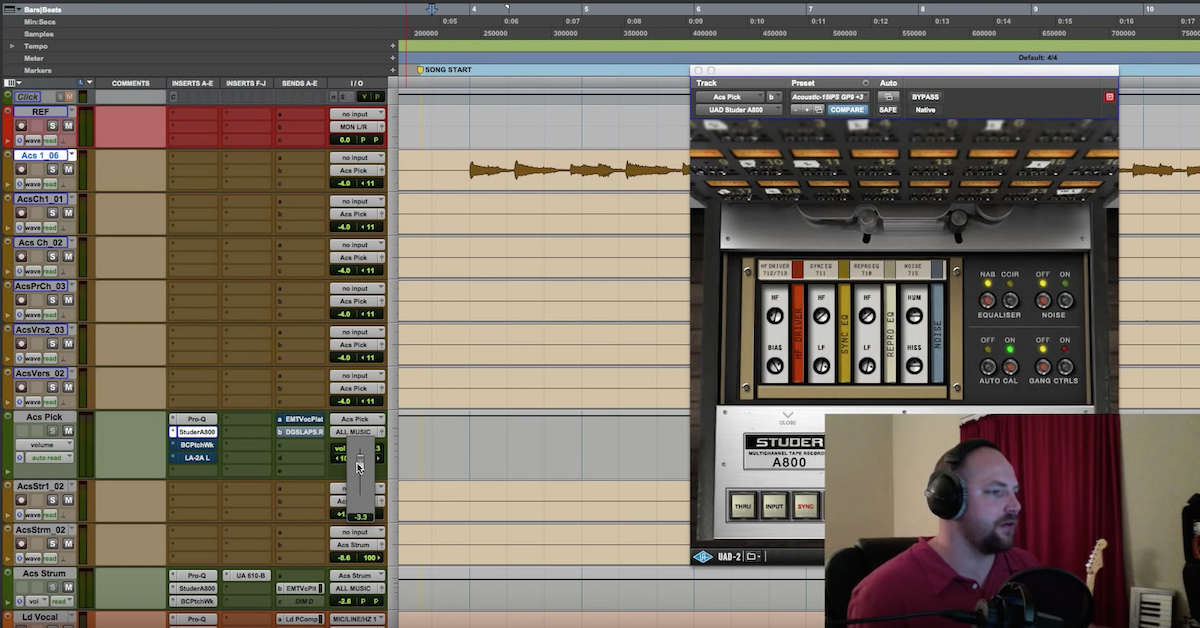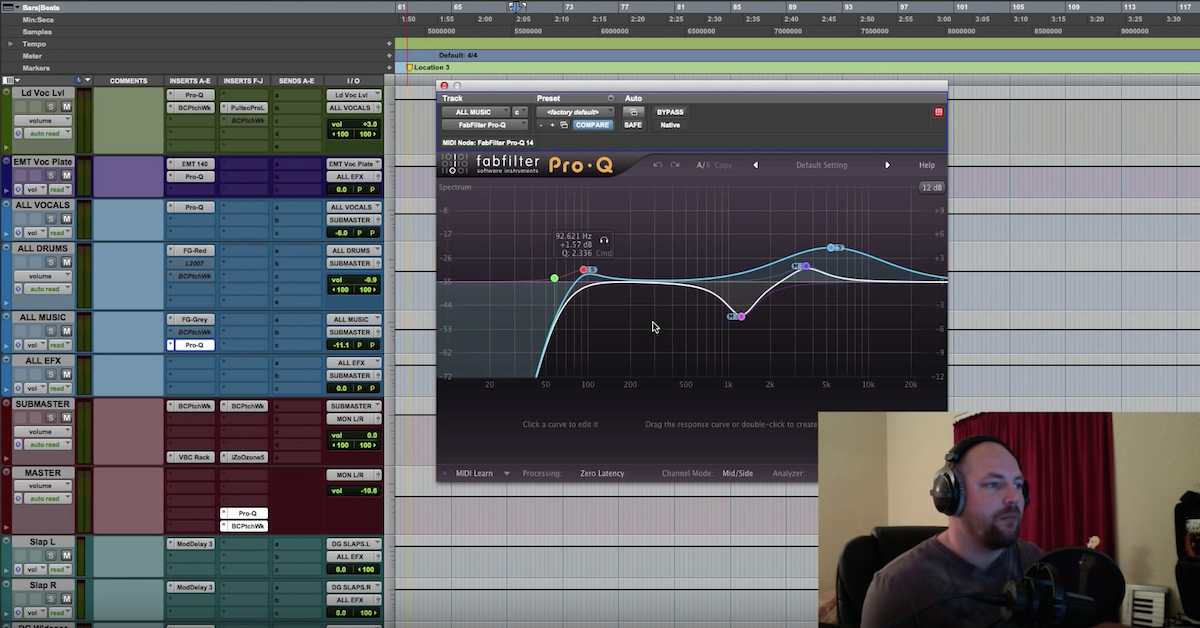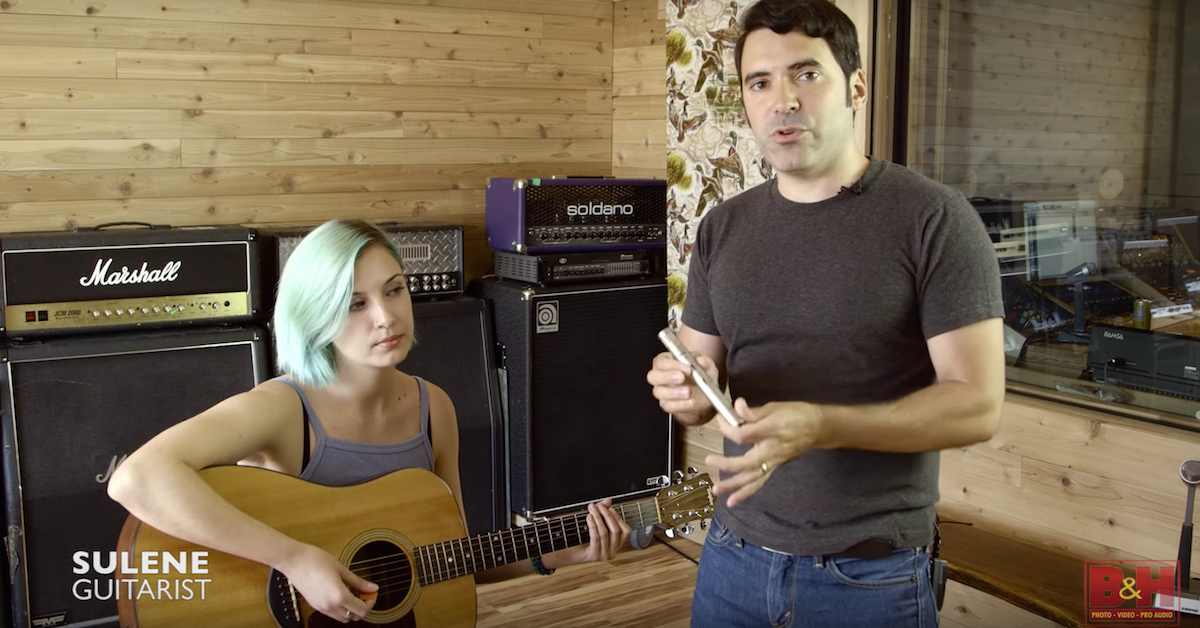Tips for Mixing Layers of Acoustic Guitar
[acoustic guitar + vocals]
I wanted a bright, clean, finger picking tone for the guitar. I started focusing on the sound of the lead vocal and acoustic guitar which went throughout the song and built everything else around it. I started with acoustic guitar and this is the EQ I used for acoustic guitars, the API 560 equalizer.
[acoustic guitar with and without Waves API 560 EQ]
Low shelf with this equalizer here, getting rid of a lot of low frequencies: 31, 63, 125. I’m cutting a little at 500. Some at 1k which really opened up the sound for other instruments to fit in. And I boosted at 16k and 8k to add airy brightness. This EQ does that well.
Then this API 2500. There is not a lot of compression going on. I used this as sort of a tone. Warms it up subtly. Once I had a sound for the lead vocal and guitar, I built around everything. This guitar goes throughout the song, then in the second verse we have this Taylor guitar which comes in. And I EQ’d pretty aggressively. Ok, so I did a hi-pass filter up to 270. Cut at 100. Cut drastically at 470. Again at 5.6 and boosted at 15. I did this because there were so many other instruments. I only wanted this guitar to be sort of a presence you heard but not really felt in terms of low frequency warmth.
[acoustic guitar + vocals]
I wanted to hear the finger picking but not as much as the harmonic content. Another reason I did this is because later in the song we have a beautiful mandolin part. I found that had I not performed this EQ, which cut out the low frequencies of that guitar, the guitar ended up fighting with the beautiful mandolin part.
[mandolin]
Drastic reverb and delay. After I had a sound for this additional Taylor, starting in the sorta break part right here, we have a couple more additional guitars which were processed pretty simply with some hi-pass filtering. Sort of a western sounding guitar.
Each of these guitars were being sent through bus 17 and 18, arriving at this aux track on which I applied this CLA-76 as sort of a warmth generator.
[acoustic + compression]
Brought down the volume a little bit too. And some more hi-pass filtering.
I’m pretty liberal when it comes to hi-pass filtering because I find it’s hard to get, especially with popular music, the amount of volume that you want out of your overall mix if you don’t get rid of these sort of low frequencies that sort of build up.
Next we’ve got this beautiful yet dull sounding Gibson guitar.
[Gibson acoustic guitar]
We’ve got 4 layers which are going through bus 25 and 26, to this aux track with some hi-pass filtering, some cuts at 500, some V-EQ — then that track is being sent to another track where we have a spring reverb. Let’s mute this and I’ll show you what all these sound like. It’s a very beautiful dull sounding guitar. And I wanted to push it back in space a little bit because I already had very close upfront guitars. So I wanted to push it back. Sounds pretty drastic on it’s own but in the mix it works.
Normally I do more volume automation then you see here but there were a couple parts that just came across as a little bit harsh in terms of the performance on this Taylor right here. I think we had some fret noise.
[acoustic guitar volume automation]
Don’t be afraid to get really crazy with volume automation when mixing. Especially acoustic instruments. Lots of fader riding on the mandolins.
Originally the producer had sort of a MIDI recorded string part.
[MIDI strings]
Sort of just an idea and it’s not played perfectly and to have listened to this in the context of the song it came across as very MIDI. We have a beautiful arrangement, a lot of acoustic instruments, and then all of a sudden just this sort of MIDI string part. And then what we did was actually we were fortunate enough to find a violin player — sort of duplicate the part right here.
[violin]
Generous amount of echo. And it’s not played perfectly, but when combined with this string part we found a good balance. Sort of a technique you can use a lot and a lot of producers do, where they combine MIDI strings along with actual strings to get the desired organic effect.
This has been Ian Vargo with The Pro Audio Files.





